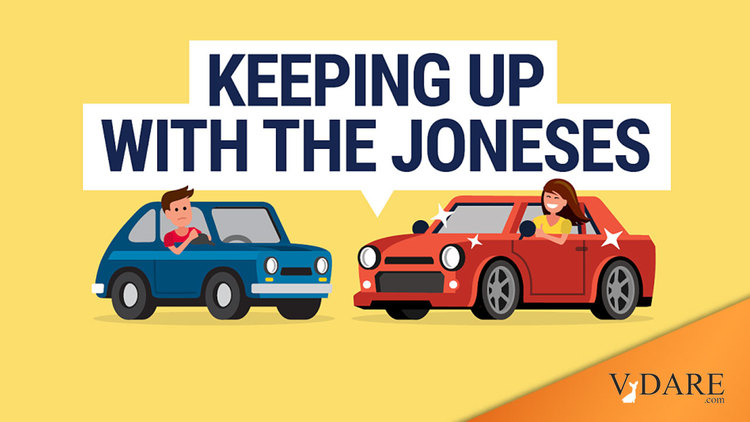
The Economy: Keeping-Up-With-The-Joneses Is Back
05/01/2021
Over the last year, consumer spending has suddenly reverted to 1950s-style keeping-up-with-the-Jones materialism. People are buying appliances and upgrading their home furnishings. Backyard recreation is suddenly huge.
From the New York Times business news via Marginal Revolution:
Spending on cars and trucks is 15.1 percent higher than it would have been on the 2019 trajectory; spending on furnishings and durable household equipment is 16.6 percent higher; and spending on recreational goods is a whopping 26 percent higher.
Altogether, durable goods spending is running $348.5 billion higher annually than it would have been in that alternate universe, as Americans have spent their stimulus checks and unused travel money on physical items.
The housing sector is experiencing nearly as big a surge. Residential investment was 14.4 percent above its prepandemic trend, representing $90 billion a year in extra activity. And that was surely constrained by shortages of homes to sell, and lumber and other materials used to make them. It is poised to soar further in coming months, based on forward-looking data like housing starts. …
Spending on transportation services remains 23 percent below its prepandemic trend, recreation services 31 percent, and restaurants and hotels 19 percent.
In the 1960s, it became fashionable to proclaim the superiority of experiences over possessions, so over time consumer spending grew in more evanescent areas like travel, dining, expert assistance (e.g., personal trainers), and luxury experiences like spa days and pedicures. People began to visit their friends and relatives at home less often, so there was less need to have nice things in the house and more occasion to spend outside the home, a gradual shift from the English addiction to at-home entertaining (e.g., Downton Abbey) to the Japanese pattern of socializing outside the house.
Whether the pandemic-caused shift is long lasting or not remains to be seen.
